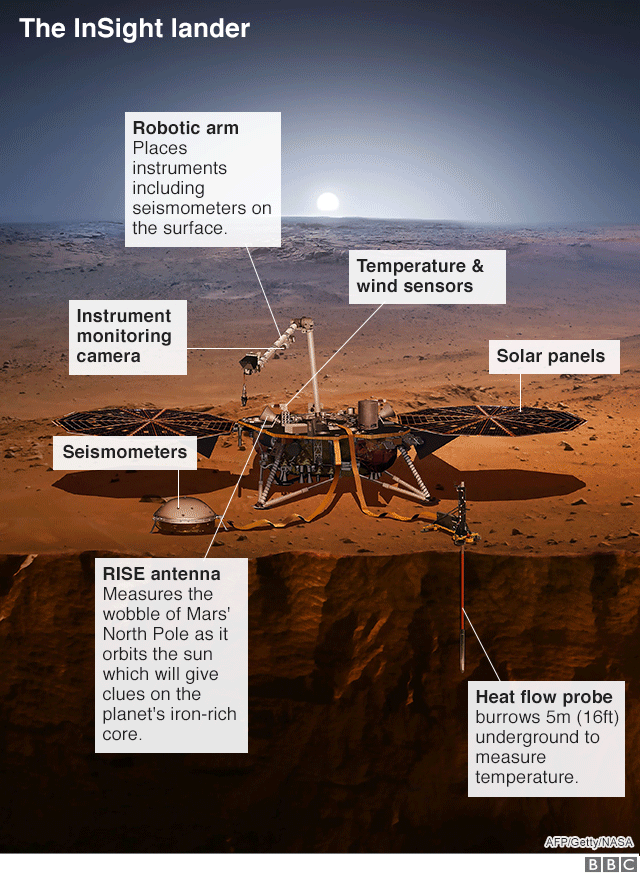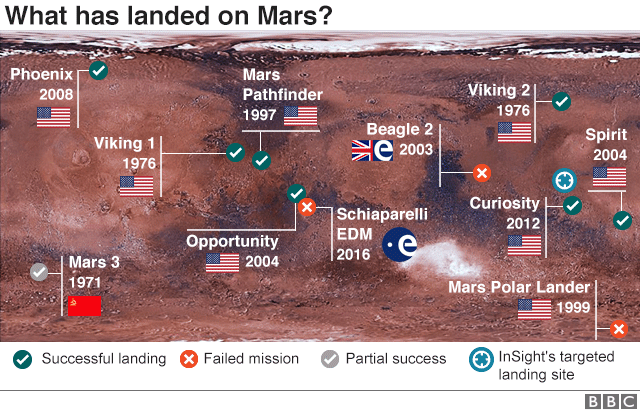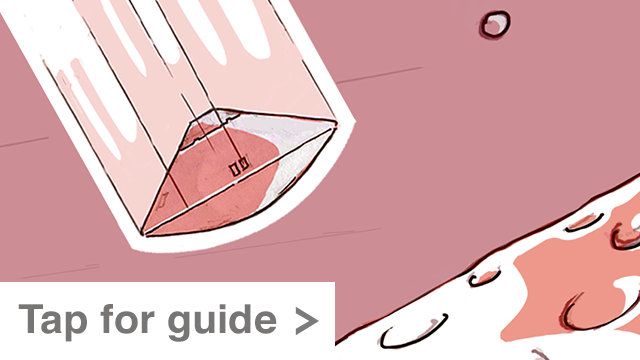Nasa's InSight probe listens to Martian winds
- Published
The seismometer data has been raised two octaves to make it more audible (best with headphones)
A UK instrument has captured "the sound" of the wind on Mars.
The British seismometer package carried on Nasa's InSight lander, external detected the vibrations from Martian air as it rushed over the probe's solar panels.
"The solar panels on the lander's sides are perfect acoustic receivers," said Prof Tom Pike, who leads the seismometer experiment from Imperial College London.
"It's like InSight is cupping its ears."
Prof Pike compares the effect to a flag in the wind. As a flag breaks up the wind, it creates oscillations in frequency that the human ear perceives as flapping.
A pressure sensor that is part of InSight's meteorological experiment also recorded the passing of the wind.
Scientists estimate the air was moving at between five and seven metres per second, from the north-west to the south-east. This fits with satellite pictures that show the tracks left by dust devils travelling in the same direction.

Nasa's InSight spacecraft is the latest robotic resident on the Red Planet. After making a dramatic touchdown on 26 November following a six-month journey from Earth, the probe is now surveying its surroundings and testing its systems.
The ultimate aim of the mission, which is sited on a flat plain just north of Mars' equator, is to study the world's interior.
As well as seismometers, InSight is equipped with a heat probe that will burrow into the ground, and a very sensitive radio experiment that will measure how the planet wobbles on its axis.
The data should reveal the position and nature of all the rock layers below the surface of Mars - from the crust to the core. It is information that can be compared and contrasted with Earth.


The wind recording is something that will soon be beyond the UK seismometers, which are known as Seismic Experiment for Interior Structure, or SEIS.
A few weeks from now, the package will be lifted on to the ground by a robotic arm and covered with a wind shield. This bell-shaped device will protect SEIS from the weather and allow the sensors to concentrate on their primary task of detecting earthquakes, or rather "marsquakes".
Co-investigator Dr Neil Bowles, from the University of Oxford, said: "To get the first data from the seismometer instrument package has been fantastic and even with a short test run the analysis is now full swing.
"To 'hear' the low-frequency rumble of the Martian wind on the lander being picked up by [SEIS] is really eerie and provides a strangely human connection to this very different environment."

The UK Space Agency invested £4m in the seismometer package.
The organisation's head of space exploration, Sue Horne, said: "This is brilliant news because it means we know the sensors have survived the rigours of landing on Mars and are meeting the requirements to achieve their science goals.
"It is just amazing to hear the first ever sounds from Mars."
The audio recordings released to the public are almost completely unaltered. In some cases, they have been raised a couple of octaves to make them more perceptible to the human ear.
Jonathan.Amos-INTERNET@bbc.co.uk, external and follow me on Twitter: @BBCAmos, external
